
The Ichneumonidae, also known as ichneumon wasps, ichneumonid wasps, ichneumonids, or Darwin wasps, are a family of parasitoid wasps of the insect order Hymenoptera. They are one of the most diverse groups within the Hymenoptera with roughly 25,000 species currently described. However, this likely represents less than a quarter of their true richness as reliable estimates are lacking, along with much of the most basic knowledge about their ecology, distribution, and evolution. It is estimated that there are more species in this family than there are species of birds and mammals combined. Ichneumonid wasps, with very few exceptions, attack the immature stages of holometabolous insects and spiders, eventually killing their hosts. They thus fulfill an important role as regulators of insect populations, both in natural and semi-natural systems, making them promising agents for biological control.

Cryptinae is a subfamily of wasps in the family Ichneumonidae. The family has also been called Gelinae, Hemitelinae, and Phygadeuontinae by various authorities, though the Phygadeuontinae have since been elevated to a separate subfamily.

Banchinae is a subfamily of ichneumonid parasitoid wasps containing about 1,500 species; the genera Glypta and Lissonota are very large. The three tribes are all distributed worldwide.
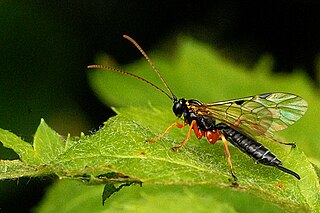
Pimplinae are a worldwide subfamily of the parasitic wasp family Ichneumonidae.
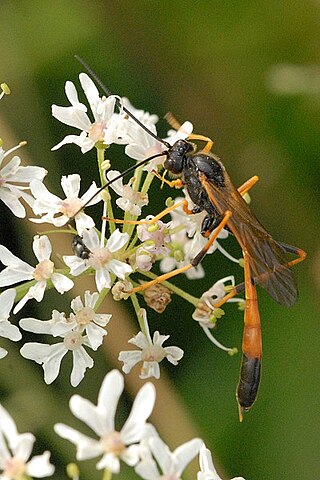
Anomaloninae is a subfamily of parasitoid wasps in the family Ichneumonidae. Several species provide beneficial services to humans by attacking forest or orchard pests.
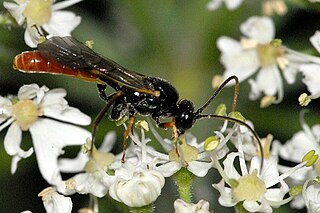
The Tryphoninae comprise a worldwide subfamily of the parasitic wasp family Ichneumonidae.

Campopleginae is a large subfamily of the parasitoid wasp family Ichneumonidae with a world-wide distribution. Species in this subfamily have been used in the biological control of the alfalfa weevil, clover weevil, various species of Heliothis, oriental army worm, European corn borer, larch sawfly, and others.
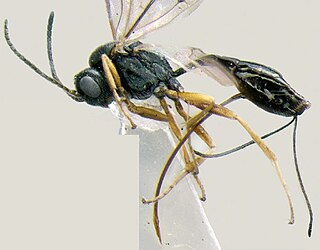
Tersilochinae is a worldwide subfamily of the parasitic wasp family Ichneumonidae.

The Labeninae is a subfamily within the parasitic wasp family Ichneumonidae . There are 12 extant genera, grouped within four tribes, that exhibit a predominantly Gondwanan distribution - most genera and species are found in Australia and South America. A few species of Labena and Grotea are found in North America, with hypotheses suggesting that the group radiated on Gondwanaland prior to the separation of Australia but after the separation of Africa/India/Madagascar.

Brachistinae is a subfamily of braconid wasps in the family Braconidae.
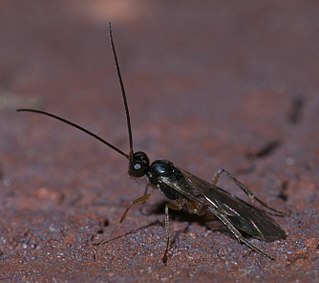
Phygadeuontini is a tribe of ichneumon wasps in the family Ichneumonidae. It is the only tribe in the subfamily Phygadeuontinae. There are about 123 genera in 12 subtribes worldwide.
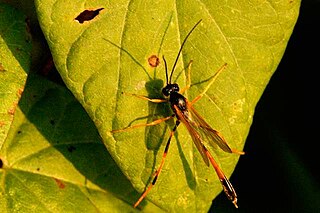
Heteropelma is a genus of parasitoid wasps belonging to the family Ichneumonidae. Species in this genus are around 25 mm in length.
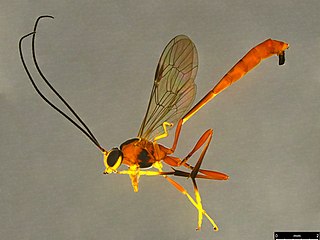
Habronyx is a genus of parasitoid wasps belonging to the family Ichneumonidae. The species of this genus are found in Europe, Australia, and North and South America.

Trichomma is a genus of parasitoid wasps belonging to the family Ichneumonidae.
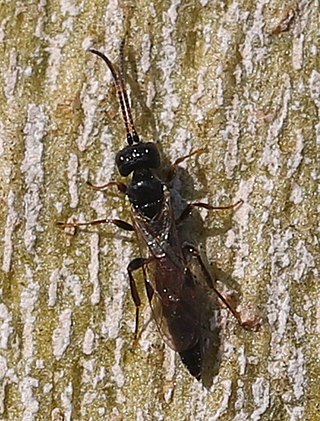
Phaeogenini is a tribe of ichneumon wasps in the family Ichneumonidae.

Platylabini is a tribe of ichneumon wasps in the family Ichneumonidae. There are at least 40 genera and about 8 described species in Platylabini.
















